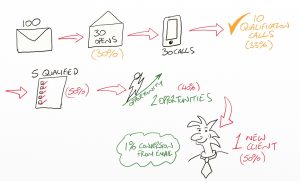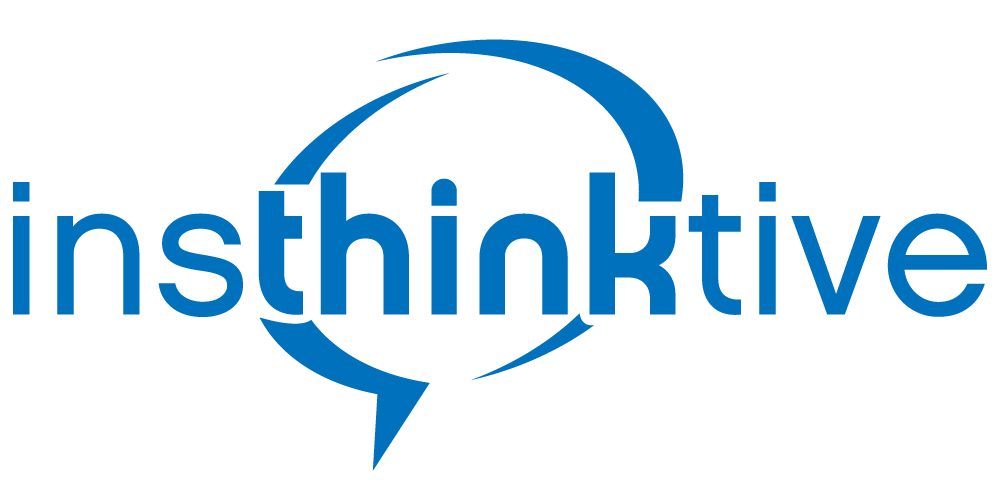I’m confused, Ronan. You are talking about two sets of numbers. Leading and Lagging. What do you mean?
Ok. Lagging numbers tell you what has happened. For example last months invoiced sales number is a lagging number. It is history. It will tell you little about your future sales success.
You need to watch lagging numbers of course. But in the game of sales, last months sales numbers are no indicator of what future sales could look like.
So you are telling me the sales numbers I measure are the wrong numbers?
Not exactly. I still believe it is vital to measure lagging numbers. But you want to place emphasis on leading numbers. Think of these as predictive numbers. Let me explain.
Let’s assume I use ONE sales tactic to generate leads. In this case, it is email.
Ronan, I thought you believed in multi-tactic sales approaches?

I do, but for simplicity let’s use one tactic.
I send 100 emails
It generates a 30% open rate.
I decide to phone everyone that opens my email. I make 30 calls.
I generate 10 expressions of interest (33% conversion rate). And arrange a Qualification Call.
I generate 5 Qualified leads from my 10 calls (50% conversion rate from Expression of interest to Qualified Lead).
Only 2 of my Qualified Leads progress to a sales opportunity (which is a live sales deal that will close this month).
I close 1 sales deal (50% conversion rate from Qualified Lead. A 1% conversion rate from initial email).
Do you have to measure all of these Ronan?
Well, it depends on what the important numbers for you are. The principle is that we measure. And from our numbers, we can predict future sales success.
I don’t get you?
Well based on my simple example if I want 1 client per month. I have to send 100 emails. If I do the same next month I will get another client. It is predictive. So if you measure sales activities that predict future pipeline growth. You will improve sales performance.
Ok, I am beginning to see the logic.
Take it one step further. As a sales coach or sales leader, you have numbers you can use to improve team performance.
You can analyse the numbers and ask “how can we improve each one”. For example, you can analyse the open rates and ask “how can we improve our open rates”? It becomes your benchmark for ongoing performance improvement.
Imagine you focused on a small set of leading or predictive sales numbers. And over the course of 12 months, you honed in on each number and challenged your team to improve conversion rates? What impact could that have on the team performance?
Ok, Ronan, it is beginning to make sense. I don’t know how it could impact, but I am sure it would have a huge impact. So, what numbers should we focus on?
Let’s look at each sales role, and we can decide based on their role the best numbers to measure. Ok?
Yes, that sounds great.



